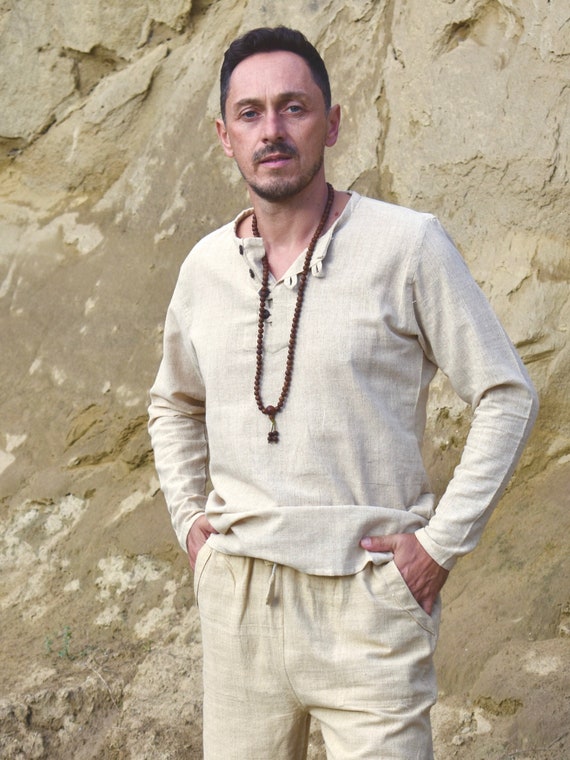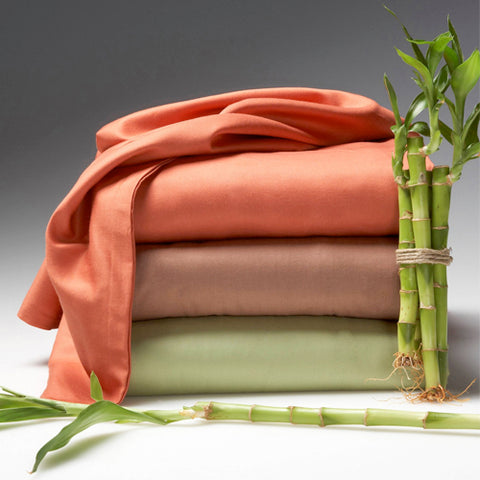Recommended News On Deciding On Hemp Clothing
Wiki Article
Why Is Hemp Stronger, More Biodegradable, And More Regenerative Than Cotton?
Hemp due to its natural properties as well as the way that it is grown is believed to be more durable and sustainable than cotton. Here's why- Biodegradability-
Natural Fiber- Hemp is a natural plant fiber and its fibers are biodegradable. Clothing and textiles made from hemp degrade over time. The resulting waste is returned to the earth, without permanent negative effects. This contrasts with synthetic fibres, such as polyamide, which degrade over a period of hundreds of years.
Hemp textiles are not likely to contain chemical treatments or synthetic additives that may hinder biodegradability. Certain cotton fabrics, on the other hand could have been treated using synthetic chemicals like dyes and finishes that could delay biodegradation.
Durability-
Hemp fibers have a reputation for their strength and durability. Clothing and textiles made from hemp are less likely to get damaged, and last longer than cotton-based products. That means hemp clothing will last longer, even before showing indications of wear and wear and tear.
Hemp fabrics are less prone to pilling than cotton. This contributes to their durability and their quality.
Regenerative Agriculture-
Soil Health- Hemp cultivation has regenerative properties when it is done responsibly. Hemp is a plant with roots that are deep, which can prevent compaction and soil erosion. It can also enhance soil health by increasing the aeration and microbes' activity. This regenerative element will leave the soil in better shape to grow future crops.
Low Environmental Impact - Sustainable hemp cultivation techniques often use minimal pesticides or herbicides to reduce environmental harm. In contrast, traditional cotton farming could cause degrading soils and water pollution because of its dependence on synthetic chemicals.
Water Efficiency-
Hemp generally requires less cotton to grow. Because of its drought resistance it is able to be grown without much or no irrigation. It's a water-efficient choice in particular for areas with limited resources.
Hemp is also a viable option in systems of crop rotation to enhance soil health and reduce disease risk and depletion. Crop rotation isn't as prevalent in traditional cotton farming.
Hemp's versatility allows it to be used in many different applications, including clothing, textiles paper, and other building materials. This versatility implies that hemp cultivation could be used to support a variety of industries using sustainable and regenerative methods.
It's important that you know that hemp is an excellent product, however it could also be unsustainable, depending on your processing and farming methods. Selecting hemp products made using ethical and sustainable methods will maximize the environmental advantages. By choosing organic cotton, you can also reduce the environmental problems that are associated with conventional cotton production. Have a look at the top hemp clothes info for blog advice including patagonia double knee pants, dash hemp clothing, hoodlamb coat, hemp t shirt mens, wholesale hemp fabric, patagonia work pants hemp, hemp baja hoodie, organic hemp fabric, mens hemp trousers, organic hemp fabric and more.

What Is It That Gives Hemp Fibers Their Ability To Breathe, Absorb Moisture And Thermoregulatory Properties?
Hemp fibers have unique structural and chemical properties which make them breathable, thermoregulation and moisture wicking. These characteristics are the result of a number of factors. Microscopic structure- Hemp fibers possess pore-like hollow structures that permit air to circulate in the fibers. Hemp textiles are highly ventilated due to their natural porosity. This structure, when weaved or knitted, permits air to circulate, encouraging the circulation of air and stopping the accumulation of heat and humidity against the body.
Hemp fibers are able to absorb water and wick away moisture. When you wear hemp clothing they can take sweat and moisture off your skin, preventing the feeling of being wet. Furthermore, hemp fibers can be effective in absorption of moisture, spreading it over a larger area of fabric where it will evaporate more quickly. The ability to wick moisture keeps you dry and comfortable when exercising or during hot weather.
Hemp fibers are naturally insulation. When it is cold, they can hold heat close to the body, allowing warmth. When it is hot, they allow heat and moisture to out. This helps to cool the body. Because of this inherent thermoregulatory property, hemp clothing can be used for different conditions and temperatures.
Hemp fibers have antimicrobial properties, and can inhibit the growth of bacteria that produce odors. This is a factor in the freshness and resistance to odor of hemp clothing, even when you are physically active.
Hemp fibers are tough and durable. They can last for a long period of time. Fabrics made of hemp fibres will keep their breathable and moisture wicking ability regardless of repeated washing and use. This makes it more durable and extends the lifespan of hemp clothing. It reduces the need to replace them as well as the environmental impact.
UV Protection from UV Hemp Fibers offer natural UV protection that shields skin from harmful UV radiation. The ability to block UV radiation is what makes hemp clothing ideal for activities outdoors.
It is important to note that the properties of hemp are intrinsic and not dependent on additives or chemical treatments. Hemp has inherent properties that allow it to be an eco-friendly and comfortable choice for clothing. In addition, these attributes remain the same even after hemp fibers are transformed into textiles. Read the recommended your input here on hemp clothes for more advice including hemp yoga pants, organic hemp underwear, hemp textiles, mens hemp clothing, hemp yoga pants, hemp button shirt, hemp tank top, hemp long sleeve shirt, hemp swimsuit, hemp jeans mens and more.

What Are Some Of The Benefits That Bamboo Clothing Has For The Environment And Comfort?
Bamboo clothing comes with many benefits when it comes to both environmental sustainability and comfort.
The softness of bamboo fabric is recognized for its extraordinary softness. It has a silky, smooth texture that feels comfortable against your skin. Bamboo clothing is luxuriously soft and is popular for loungewear, activewear, intimate clothes, and many other kinds of clothing.
Bamboo fibers breathe easily, and they absorb moisture. Micro-gaps allow for air circulation, keeping you cool in hot weather. Moisture-wicking fabric helps pull sweat off your skin and decrease the feeling of dampness.
Bamboo clothing is a great thermoregulating qualities. It will keep you warm in colder temperatures by retaining warmth close to your skin. It also allows you to keep cool in summer heat because it lets the excess heat and moisture to escape. Bamboo clothing is suitable for wear throughout the year since it can adapt to different temperatures.
Bamboo fabric is hypoallergenic and soft on sensitive skin. Bamboo fabric is less likely than other fabrics to trigger allergic reactions or irritations, so it's a good option for those with sensitive skin or allergies.
Bamboo fibers naturally have antimicrobial properties and will stop the development of bacteria that cause smell. This feature can help maintain the freshness of bamboo clothing even when you are doing physical exercises.
Environment-
Bamboo is sustainable- It is a sustainable and renewable resource. Bamboo is the fastest growing plant in the world. It requires a minimum amount of irrigation and no pesticides. Bamboo can be harvested without killing the plant as it regenerates through its root system.
Bamboo is a naturally water-efficient plant that is water-efficient. Bamboo can flourish with little irrigation and can be planted using rainwater only, reducing the environmental impact caused by water use in agriculture.
Biodegradability- Bamboo clothing is biodegradable, meaning it naturally decomposes over time when disposed of. This property reduces the amount of nonbiodegradable textiles that end in landfills.
Carbon Sequestration Bamboo plants are able to absorb CO2 from the air during rapid growth. Bamboo farming is a great way to reduce greenhouse gas emissions and serve as a source of carbon.
Chemical Reduction - The production and processing of bamboo textiles generally requires less chemicals than other textiles. This can help reduce the impact on the environment that textile manufacturing has.
Closed-Loop Processes- Some bamboo fabric manufacturing processes are closed-loop which recycles water as well as chemical waste, and minimizes the amount of waste and pollution.
It's important to note that the impact on the environment of bamboo clothing can vary dependent on the specific manufacturing process employed and whether the bamboo utilized for manufacturing is made from sustainable and sustainably managed bamboo forests. Consumers should only buy bamboo clothing made with eco-friendly ethical methods to guarantee the highest environmental benefits. View the most popular more on bamboo clothing for more tips including bamboo shorts, bamboo baby clothes, bamboo sports clothing, bamboo ladies clothing, ladies bamboo tops, bamboo top, bamboo clothing, bamboo cay shirts, short bamboo, bamboo yoga trousers and more.
